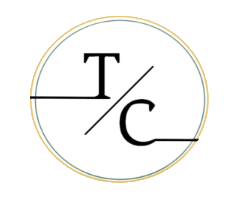What You Need to Know About Revenue Forecasting
What You Need to Know About Revenue Forecasting
Revenue forecasting is the process of predicting future income based on past sales data, market trends, and business growth projections. It helps companies make informed financial decisions, plan budgets, and set realistic goals.
Why Revenue Forecasting is Important?
Revenue forecasting is a crucial element of business planning, allowing organizations to anticipate their financial trajectory.
By analyzing historical data and current market trends, businesses can predict future revenue streams with greater accuracy. This forecasting process serves as a strategic tool, guiding financial planning, resource allocation, and decision-making related to future revenue management.
The importance of revenue forecasting extends beyond simple projections. It provides businesses with a structured approach to growth and sustainability.

Accurate forecasts help companies allocate resources wisely, ensuring that investments generate the highest possible returns. This is especially critical for startups and small businesses, where financial resources are often limited, and every dollar spent must be optimized.
Proper forecasting supports decisions on hiring sales teams, scaling marketing efforts, and investing in new opportunities.
For larger enterprises, revenue forecasting plays a key role in managing growth and financial complexity. It enables business leaders to make strategic choices regarding product development, market expansion, and capital investments.
By understanding revenue trends and potential drivers, companies can refine their operations, identify new revenue opportunities, and proactively mitigate risks.
Revenue forecasting blends both analytical and strategic thinking, combining historical data with market insights to create a reliable outlook on the future.
By mastering this practice, businesses gain a clearer vision of the road ahead, equipping them to adapt to changing market conditions and pursue long-term growth opportunities.
Revenue Forecasting Methods
There are several revenue forecasting methods, each offering different levels of accuracy, complexity, and responsiveness. The choice of method depends on the availability of data, the business model, and the required precision.
One common approach is the moving average method, which calculates the average revenue over a set number of past periods and uses that figure to predict future revenue. This method is easy to apply and understand but may lag in responding to sudden market changes or shifts in business performance.

Another method is exponential smoothing, which assigns greater weight to more recent revenue data while gradually decreasing the influence of older data. This method is more responsive to trends than the moving average but can sometimes be too sensitive to short-term fluctuations.
Regression analysis is a statistical technique that predicts revenue by analyzing relationships between revenue and other influencing factors, such as economic conditions, marketing efforts, or competitor activity. While this approach can provide valuable insights, it requires extensive data and can be complex to execute.
For businesses looking to assess risk and uncertainty, Monte Carlo simulation generates a range of possible future revenue outcomes through random sampling. This technique helps estimate probabilities of different revenue targets and evaluate risk levels, but it is computationally intensive and requires large datasets.
A bottom-up revenue forecasting model builds revenue projections from individual product or service sales estimates before aggregating them into a total forecast. This method provides high accuracy and detail but can be time-consuming and complex to implement, especially for businesses with diverse offerings.
The right forecasting method depends on the specific needs of the business. Some companies may find that a simple moving average method is sufficient, while others may require more advanced techniques like regression analysis or Monte Carlo simulation for a more precise and data-driven approach to revenue forecasting.
Revenue forecasting can be synonymous with meal prepping for the week. You can plan without overbuying if you know what’s in your fridge.
Short on time? Watch a quick explainer video instead 👇
FAQs
What is the best method to forecast revenue?
The best method for forecasting revenue depends on the business model, available data, and the level of accuracy required.
- For simple and stable businesses, the moving average method works well, as it uses historical revenue trends to predict future performance.
- For businesses that experience fluctuations, exponential smoothing is more effective because it places more weight on recent revenue data while still considering past trends.
- For businesses influenced by external factors, regression analysis can be useful by incorporating economic indicators, marketing efforts, and competition into revenue predictions.
- For businesses dealing with high uncertainty, Monte Carlo simulations can model different revenue scenarios and assess risks.
- For companies with multiple products or services, bottom-up forecasting provides detailed accuracy by estimating revenue at an individual level before aggregating totals.
What are the four types of forecasting?
Forecasting methods typically fall into four main categories:
- Qualitative forecasting – Uses expert opinions, market research, and intuition to predict revenue (best for new businesses with little historical data).
- Time-series forecasting – Uses historical data trends to predict future revenue, including methods like moving averages and exponential smoothing.
- Causal forecasting – Analyzes relationships between revenue and external variables, such as economic conditions or marketing campaigns (e.g., regression analysis).
- Simulation-based forecasting – Uses mathematical models to generate different possible revenue outcomes, such as Monte Carlo simulations.
What is the formula for forecasting revenue?
The most common formula for forecasting revenue is:
Forecasted Revenue = Historical Revenue × (1 + Growth Rate)
For a more detailed projection, businesses may use:
Forecasted Revenue = (Total Number of Customers × Average Revenue Per Customer) × Growth Rate
What is an example of forecasting?
A retail company wants to forecast its revenue for the next quarter. If its sales for the past quarter were $500,000 and it expects a 10 percent growth rate, the revenue forecast would be:
$500,000 × (1 + 0.10) = $550,000
For a SaaS company using a bottom-up approach, it may estimate:
- 1,000 new customers next quarter
- An average subscription fee of $50 per month
- A customer retention rate of 90 percent
Its revenue forecast would be:
(1,000 × $50) × 3 months × 0.90 = $135,000 for the next quarter.
This type of forecasting helps businesses plan for inventory, staffing, and marketing budgets while managing financial expectations.

